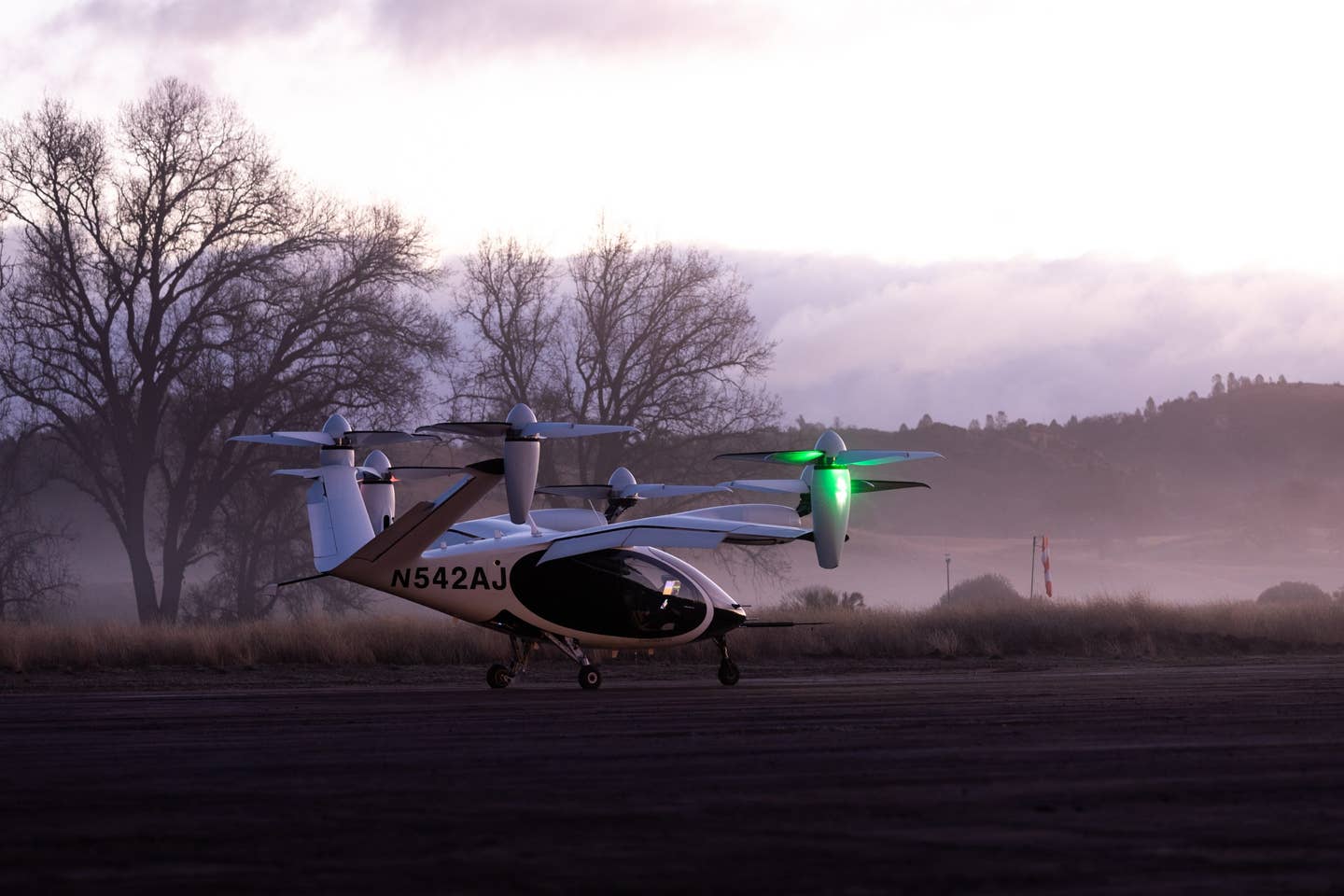
Joby’s aircraft is designed to carry four passengers and a pilot with zero operating emissions. Bradley Wentzel
Joby Aviation this week became the first company to fly an all-electric vertical takeoff and landing (eVTOL) aircraft as part of NASA’s Advanced Air Mobility Nation Campaign.
The effort by NASA aims to promote public confidence in emerging aviation markets, such as passenger air taxis, through flight testing in realistic scenarios and data analysis that the agency says will inform the development of regulatory standards for emerging aviation platforms.
In July, NASA said it had partnered with 13 companies and one university so far; Wisk Aero is also one of the flight partners for demonstrations.
During a two-week test campaign at Joby’s Electric Flight Base near Big Sur, California, NASA and Joby will study the acoustic signature of Joby’s all-electric aircraft, which the company says it intends to operate as part of a commercial passenger service beginning in 2024.
“NASA is proud to continue our relationship with Joby by gathering highly valuable aircraft safety and noise data that will contribute toward an aviation future that includes Advanced Air Mobility (AAM) operations,” Davis Hackenberg, NASA’s AAM mission integration manager, said in a statement.
“Data from industry leaders like Joby is critical for NASA’s research activities and future standardization of emerging aircraft configurations. Industry partnerships are imperative for the United States to become a leader in the development of a safe and sustainable AAM ecosystem.”
How It Will Work
NASA engineers will deploy their Mobile Acoustics Facility and more than 50 pressure ground-plate microphones in a grid array that allows for multi-directional measurement of the Joby aircraft’s sound emissions. Using this data, NASA and Joby will generate noise hemispheres for the aircraft that capture the intensity and the character of the sound emitted in comparison to helicopters, drones, and other aircraft.
The readings, in combination with the noise profile of urban communities, can be used to verify how proposed aircraft operations will blend into the existing background noise, the company says.
“NASA has been a critical catalyst in the transition to electric aviation, and we’re proud to have partnered with them on multiple groundbreaking projects since our first collaboration in 2012,” said JoeBen Bevirt, founder and CEO at Joby, in a statement. “It’s incredibly exciting to be the first eVTOL company to fly as part of the AAM National Campaign, leading the way toward a more sustainable future.
“From day one, we prioritized building an aircraft that not only has an extremely low noise profile, but blends seamlessly into the natural environment,” Bevirt said. “We have always believed that a minimal acoustic footprint is key to making aviation a convenient part of everyday movement without compromising quality of life, and we’re excited to fly with NASA, our long-time partners in electric flight, to demonstrate the acoustic profile of our aircraft.”
Wednesday’s announcement is the latest effort between Joby and NASA. Over the past decade, Joby has worked with the agency on a range of aircraft projects that have explored electric propulsion, including:
- A long-endurance eVTOL demonstrator called Lotus
- The Leading Edge Asynchronous Propeller Technology (LEAPTech) project
- The design of the X-57 Maxwell experimental aircraft that’s now undergoing systems integration testing
About The Aircraft
With a maximum range of 150 miles recently demonstrated during flight testing, and a top speed of 200 mph, Joby’s aircraft is designed to carry four passengers and a pilot with zero operating emissions, the company states. With more than 1,000 flight tests completed and full-scale prototypes in the air since 2017, Joby aims to certify its electric air taxi with the Federal Aviation Administration (FAA) in 2023.
The aircraft is powered by six propellers that tilt to enable vertical takeoff and efficient cruise flight. Joby says the number of blades, blade radius, tip speeds, and disk loading of the aircraft were all selected to minimize the acoustic footprint and improve the character of the noise produced. The propellers can also individually adjust their tilt, rotational speed, and blade pitch. This helps to avoid the blade vortex interactions that cause the “wop wop” sound associated with traditional helicopters.
Once testing is complete, a team of acoustic experts from NASA and Joby will work together to analyze the data before sharing their findings later in the year.
Joby recently listed on the New York Stock Exchange (“NYSE”) under the ticker symbol “JOBY” following its business combination with special purpose acquisition company Reinvent Technology Partners. Proceeds raised in the transaction, plus cash on the company’s balance sheet as of March 31, equal approximately $1.6 billion, which is expected to fund Joby through initial commercial operations, the company states.
Joby joins the ranks of China-based competitor EHang in the quest to find solutions toward zero-emission aviation. Competitors Lilium and Archer have also announced their own plans to go public this month.

Subscribe to Our Newsletter
Get the latest FLYING stories delivered directly to your inbox






